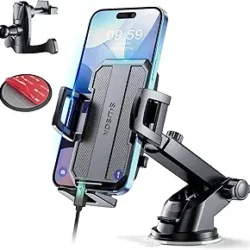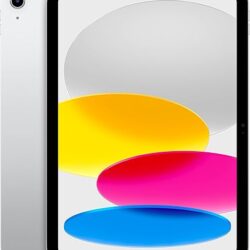四、使用连词时要注意的几个问题 Points that merit special attention
(一)连词表示语法关系的种类 Conjunctions show types of grammatical relations
1.并列关系 Coordination
被连接的两个词、词组是平等的,不分主次,有时前后位置可 以互换,但意义不变。 The two joined words or phrases are equal to each other with neither being primary or secondary. Sometimes the order of the two parts can be reversed, though the meaning expressed remains the same.
(1)连接名词、代词或名词性词组的连词有“和、跟、同、 与、及”。 Conjunctions joining nouns, pronouns or nominal phrases are 和, 跟,同,与 and 及。
A.“和、跟”多用于口语。例如: 和, 跟 are commonly used in spoken Chinese. For example:
工程师和技术员都到了。 (连接名词) ( connecting nouns)
我跟你不需要参加这次考试。
(连接代词)( connecting pronouns)
英文报和法文报都没订。
(连接名词性词组)( connecting nominal phrases)
B.“同、与、及”多用于书面语。例如:
同、与、及 are chiefly used in written Chinese. For example:
国家大力发展工业与农业。
(连接名词)( connecting nouns)
这个小卖部不卖笔、墨、纸及其他文具。
(连接名词)( connecting nouns)
(2) 连接动词、词组或分句的连用“并且”,书面语中常写成“并”。例如:
Conjunction 并且 joins verbs, phrases or clauses, also known as in written language. For example:
新事物不断发生并(且)发展。
(连接动词)( connecting verbs)
代表们热烈讨论并(且)一致通过了这个草案。
(连接词组)( connecting phrases)
我们应该并(且)能够完成这个任务。
(连接助动词)( connecting auxiliary verbs)
(3) 连接形容词或形容词性词组的连词有“而、而且”。例如:
Conjunctions joining adjectives or adjective phrases are 而、而且. For example:
她是一位朴素而美丽的姑娘。
这个运动员迅速而且准确地完成了每一个动作。
(4)可以连接各类词或词组的连词有“或者”,书面语中常写“或”。例如:
或者 can be used to join all kinds of words or phrases, often shortened as 或 in written language. For example:
你们或者打球,或者跑步,或者打太极拳,都行。
2.偏正关系
Subordination
被连接的词、词组或句子之间的关系是一偏一正,有主次之分, 前者是“偏”,后者是“正”,也是重点。常用的连词有“如果、不
但、因为、即使、但是”等。有的连词常两个配合使用。例如:
The conjunctions如果,不但,因为,即使,但是, etc. are frequently used if the relationship between the joined words, phrases or clauses is that of subordination. In this ease, the first clause is subordinated to the second clause, where the key message often lies. Some of these conjunctions are often used in pairs. For example:
我因为忙,所以没去。
今天虽然有风,但是不冷。
有的连词要跟别的副词配合使用。例如:
Some of these conjunctions are often used together with other adverbs. For example:
只要努力,就能取得好的成绩。
既然来了,就多坐坐。
(二)几个连词的用法
Usage of several conjunctions
1.“和”:
(1)“和”除了常连接名词、名词性词组和代词外,还可以连接动词、形容词和动词性词组。例如:
The conjunction 和 is often used to join nouns, nominal phrases, pronouns, as well as verbs, adjectives and verbal phrases. For example:
讨论和通过
巩固和发展
(连接动词) ( connecting two verbs)
幸福和愉快
勤劳和勇敢
(连接形容词) ( connecting two adjectives)
划船、游泳和爬山
(连接词组) ( connecting two phrases)
积极恢复和努力发展
(连接词组)( ditto)
(2) 用“和”连接的成分是并列的,在意义上往往是同类的。
“和”一般不连接分句。例如:
The elements joined by 和 are coordinate and they often belong to the same kind. Generally, it is not used to join clauses. For example:
我现在看报和听音乐。x我现在看报和我听音乐。
这种钢笔多少钱一支?墨水多少钱一瓶? x这种钢笔多少钱一支和墨水多少钱一瓶?
大夫给我一些药并且说:“要按时吃药。 x大夫给我一些药和说:“要按时吃药。
(3)用“和”连接三个或更多的词或词组时,“和”一般用在最后的词或词组前边。例如:
When 和 is used to join three or even more than three words or phrases, it is usually put in front of the last. For example:
桌子上有书、本子、钢笔和墨水。
也可以用顿号“、”代表连词“和”。例如:
A slight-pause mark can be used to stand for the conjunction 和. For example:
桌子上有书、本子、钢笔、墨水。
2.“及”:
“及”只用于书面语,只能连接名词。“及”所连接的事物如在意义上有主次的分别,主要的放在“及”前面。例如:
The preposition 及 is only used in written Chinese to join nouns. The primary part, if it can be differentiated from what is secondary in the joined parts, should be placed before &. For example:
这个商店卖布、绸、缎及其他商品。
3.“并且”:
“并且”常用在两个动词或动词性词组之间,表示两个动作同时或先后进行。例如:
并且 is often used between two verbs or verbal phrases and indicates that two actions are in progress simultaneously or successively. For.example:
大会热烈讨论并且一致通过了决议。
我们商量并且决定明天去拜访一位经济专家。
4.“还是”和“或者”:
这两个连词都表示选择,但用法不同。
Both 还是 and 或者 indicate alternative. However, they have different uses.
(1)“还是”主要用于疑问句或用在陈述句里表示不能确定的意思。例如:
还是 is mainly used in an interrogative sentence or in a declarative sentence with the implication of uncertainty. For example:
你去还是他去?
我不知道上午还是下午。
(2)“或者”一般都用于陈述句。例如:
或者 is usually used in a declarative sentence. For example:
今天或者明天都行。
你带一支钢笔或者圆珠笔。











